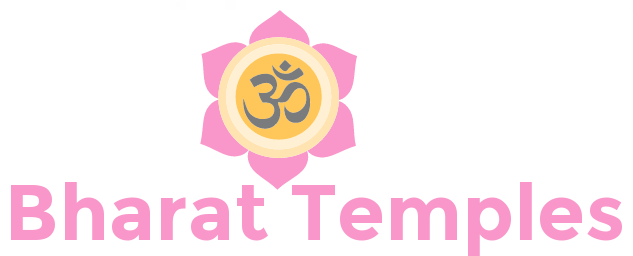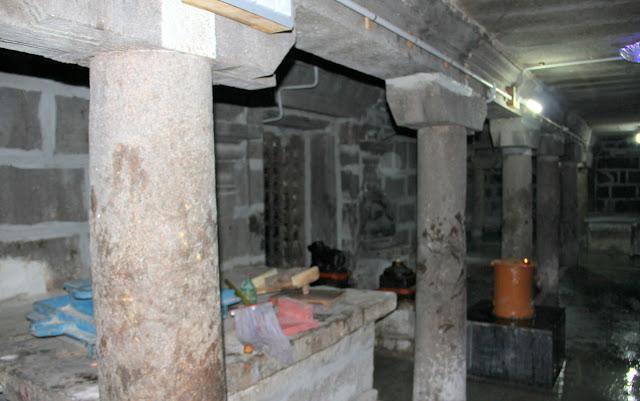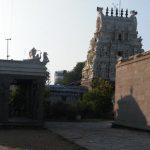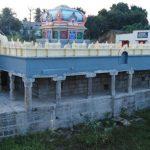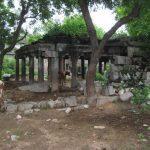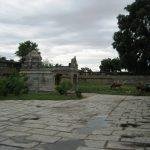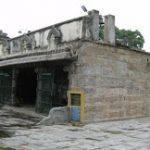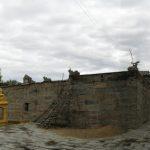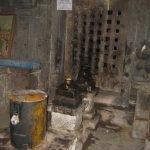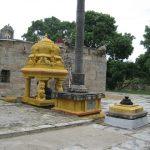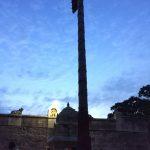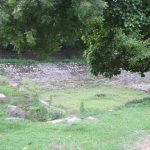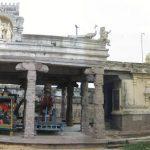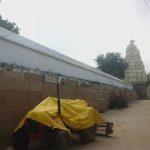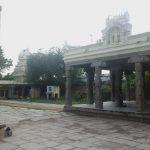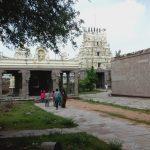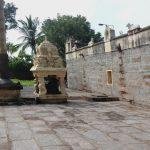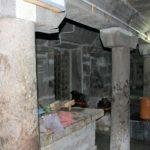Contents
Jalanatheeswarar Temple, Thakkolam, Vellore
| Date built: | – |
|---|---|
| Deity: | Jalanatheeswarar |
| Architectural style: | Dravidian architecture |
| Major festivals | – |
| Locale: | Thakkolam |
| District:: | Vellore |
| Address: | Jalanatheeswarar Temple,Thakkolam Post, Arakkonam Taluk, Vellore District – 631 151 |
| Phone | +91 4177 246 427 / +91 9994786919 |
Temple Opening Time
This temple remains open from 7.00 AM to 10.00 AM in the morning and 5.00 PM to 8.00 PM in the evenings.
Festivals
10 day Brahmotsavam in the Tamil month of Chitrai (April-May), Navarathri in the Tamil month of Puratasi (September-October), Skanda Sashti in the Tamil month of Aippasi (October-November), Vaikasi Visakam in the Tamil month of Vaikasi (May-June), Aani Tirumanjanam in the Tamil month of Aani (June-July), Aadi Pooram in the Tamil month of Aadi (July-August) Tiruvadhirai in the Tamil month of Margazhi (December-January), Masi Makam (February-March), Thai Poosam (January-February) and Tirukarthikai (November-December) are the major festivals celebrated in this temple. Guru peyarchi and Pradosham are also observed regularly.
Prayers
As divine cow Kamadenu worshipped here, prayers offered here bring 100 fold benefits to the devotee, according to Puranas. Almost prayers are for profitable farm yields. Devotees perform abishek to Lord and Mother and offer pudding-Pongal as Nivedhana. Prayers offered by people work wonders for those who are honest in their life even if they face severe problems in public life in a society which is surrounded by corruption everywhere. 99 percent of people reduce their faith when more problems are on the way due to their previous karma and less than one percent pass those tests to get a good and healthy life with wealth by putting more faith in divine power.
Architecture
Legend / Local stories
Daksha’s Olam:
Another, legend is Daksha who conducted Yagna in a grand scale without inviting Lord Shiva; the purpose of Yagna was to prove his superiority over Lord Shiva. Though he married off his daughter Dakshayani (Sati Devi) to Lord Shiva, his animosity against the Lord remained the same. He invited all the Gods and sages for the grand Yagna except Lord Shiva. Dakshayani without the consent of Lord arrived at the Yagna and was regrettably, not well received with due honor and was insulted. Consequently, Dakshayani sacrificed her life in the Yagna fire. Lord Shiva sent Veerabhadra a self-manifestation to punish Daksha.
Finally, when Daksha is annihilated and his head was replaced with a goat’s head. Daksha realized his mistake and prayed to Lord Shiva to pardon him. Lord Shiva advised him to go the river bank and asked him to invite Lords Vinayakar, Mahavishnu and Brahma to witness his prayers. On Thakkan’s request, Lords Vinayakar, Mahavishnu and Brahma came to witness his prayers. Since Thakkan’s head had been replaced with that of a goat, his prayer sounded like the bleating of a goat like huge cry (“Olam”). Hence this place is called as Daksha’s Olam – changed to Thakkolam. These prayers are called “Chamakam” and each line ends with syllable “may”. Pleased with his prayers, Lord Shiva blessed him with salvation (Moksham).
Theenda Thirumeni:
Another legend is that Goddess Parvathi returned to this place after having been insulted at her father Daksha’s yagna. She is believed to have installed a lingam made of sand here. Once she was performing her penance, this region was inundated by flood water. To protect the lingam, Goddess Parvathi embraced it. This is evident from the markings that can still be seen on the idol. Since this Lingam is believed to have been embraced by Goddess Parvathi, it is not touched by human hands. Poojas are performed by the priests without touching it.
Theerkathar, Son of Sage Udhadhi got relieved of his curse here:
Theerkathar was born to Sage Udhadhi the brother of Jupiter (Guru) and Mamata. Theerkadha one day saw divine cow Kamadenu near his hermitage. He requested the cow to be with him for conducting a yagna. Kamadenu said that it could not oblige him without the permission if Indira. The sage cursed the cow to become an ordinary and average animal losing its super powers. The cow in turn cursed the sage to be engaged in menial jobs. Sage Udhathi was sad to see his son doing menial jobs. He came to this place as advised by Maharshi Naradha and worshipped the Lord. Lord Shiva advised Sage Udhathi to perform penance on Nandhi and perform abishek to him with the water springing from Nandhi.
It’s believed that the spring from Nandhi is Ganges and Lord Jalanatheeswarar is also referred as Gangadheeswarar. The sage got his son Theerkathar rescued from the curse. Kamadenu too worshipped here by pouring the milk on the Lord and was restored to its original form and power. The Lingam worshipped by the Sage Udhadhi is in the northern side of the temple as Gangadheeswarar temple and opposite to the temple is Ganga Theertha Kulam.
Worshipped by Kamadenu:
Kamadenu, the divine cow, is also believed to have worshipped the lord here by pouring milk on the lingam. She was relieved from Theerkathar curse and got back her original form and power. On knowing this, Lord Indiran is believed to have come to Thiruvooral and taken her back to the celestial world.
Water flowing out from the Mouth of Nandhi:
At the behest of sage Uttandi, Nandi brought the river Ganges to this place. In the olden days, it was designed in a way that water would come out of Nandi idol and flow around the Shiva Linga idol; it would reach another Nandi idol and come out of its mouth to ultimately reach the river ‘Kallaru’.
Chandran got relieved of his curse here:
Thakkan gave all his 27 daughters to marry Chandran. After marriage, he showed interest to only one wife Rohini and the rest he ignored. Thakkan got wild and cursed Chandran with deadly skin disease. Chandran worshipped in this temple and after taking bath in the Ganga Theertha Kulam he was relieved out of the curse.
Demon Thakkan:
One more legend is that King Sivathithan who ruled Thiruvural was troubled by demon Thakkan. The King prayed to Lord Shiva of this temple who instructed Goddess Kali to destroy the demon. Goddess Kali executed the orders of Lord Shiva. For this reason, there is a separate shrine for Goddess Kali at the border of this place. This shrine attracts a large number of devotees. It is believed that since Thakkan cried loudly before being killed by Goddess Kali, this place got the name Thakkan Olam – Thakkolam (Olam meaning crying loudly).
Sthala Vriksham:
Another reason why this place is named “Thakkolam” is that the sacred tree of this temple is also called “Thakkolam” (Pottu).
Worshipped by Others:
It is believed that Sage Samvartha, Lords Mahavishnu, Indiran, Suryan, Chandran, Yama (lord of death), Sage Udhadhi, Sage Theerkathar, Saptha Kannikas (the seven divine virgins), Pandavas and Savitha Sivachariyar have also worshipped the Lord of this temple to seek absolution for their sins. Since the divine cow Kamadenu worshipped the Lord in this place, any good deed by devotees done here pleasing Lord Shiva would bring them 100-fold benefits.
Photo Gallery
How to Reach:
The Temple is located at about 2 Kms from Thakkolam, 30 Kms from Tiruvallur, 15 Kms from Arakkonam, 16 Kms from Thiruvalangadu, 29 Kms from Kanchipuram, 18 Kms from Thirumalpur, 11 Kms from Perambakkam, 30 Kms from Sriperumbudur, 53 Kms from Avadi, 28 Kms from Thiruthani, 79 Kms from Vellore, 44 Kms from Poonamallee, 56 Kms from Ranipet and 65 Kms from Chennai.
Other Paadal Petra Shivasthalams near Thakkolam are Ilambaiyangkottur (11 kms), Thiruvirkolam (14 kms), Thirumalpur (18 kms), Thirupachur (25 kms) and Thiruvenpakkam/Poondi (34 kms).
By Road:
The Temple is located at about 250 meters from Thakkolam Bus Stand on Sannathi Street. Town bus services to Thakkolam via Marimangalam and Perambakkam are available from Tiruvallur. Town bus services to Thakkolam are also available from Kancheepuram and Arakkonam. Direct bus is available from Poonamallee bus stand. Arakkonam bus from Chennai passes through Thakkolam. If you are going by personal transport, take the Chennai-Bangalore highway, go beyond Kanchipuram. You will come across a flyover. Go beneath it and turn right. Proceed further for another 10 – 11 Kms until you reach Thakkolam railway station. Turn right there and proceed for another 5 Kms to reach Thakkolam.
By Train:
Thakkolam is on the rail route of Kanchipuram to Arakkonam section of the Southern Railway. The temple is located at about 5 Kms from the Thakkolam Railway station. Nearest Major Railway Station is Arakkonam Junction, located at about 14 Kms from the Temple. Arakkonam can be reached from Chennai by electric train.
By Air:
Nearest Airport is located at Chennai (64 Kms).
Contact Details
Jalanatheeswarar Temple,
Thakkolam Post, Arakkonam Taluk,
Vellore District – 631 151
Phone: +91 4177 246 427
Mobile: +91 9994786919
